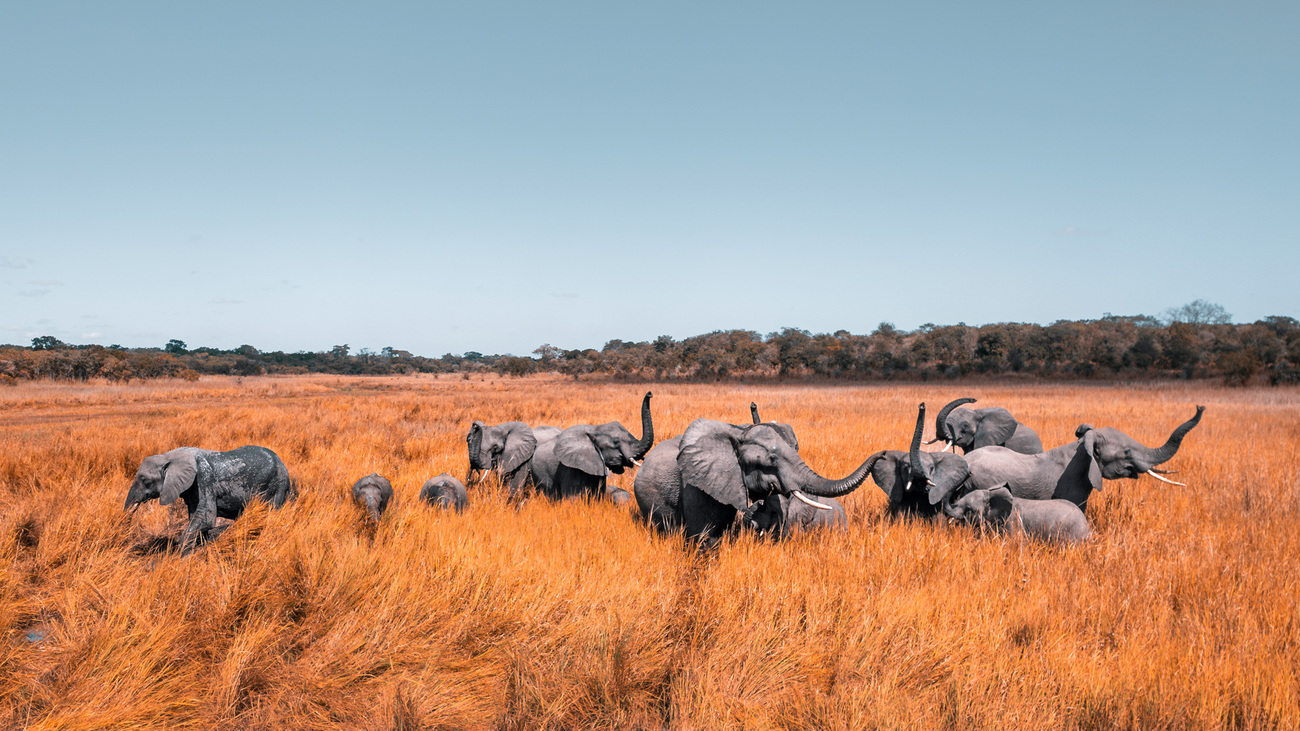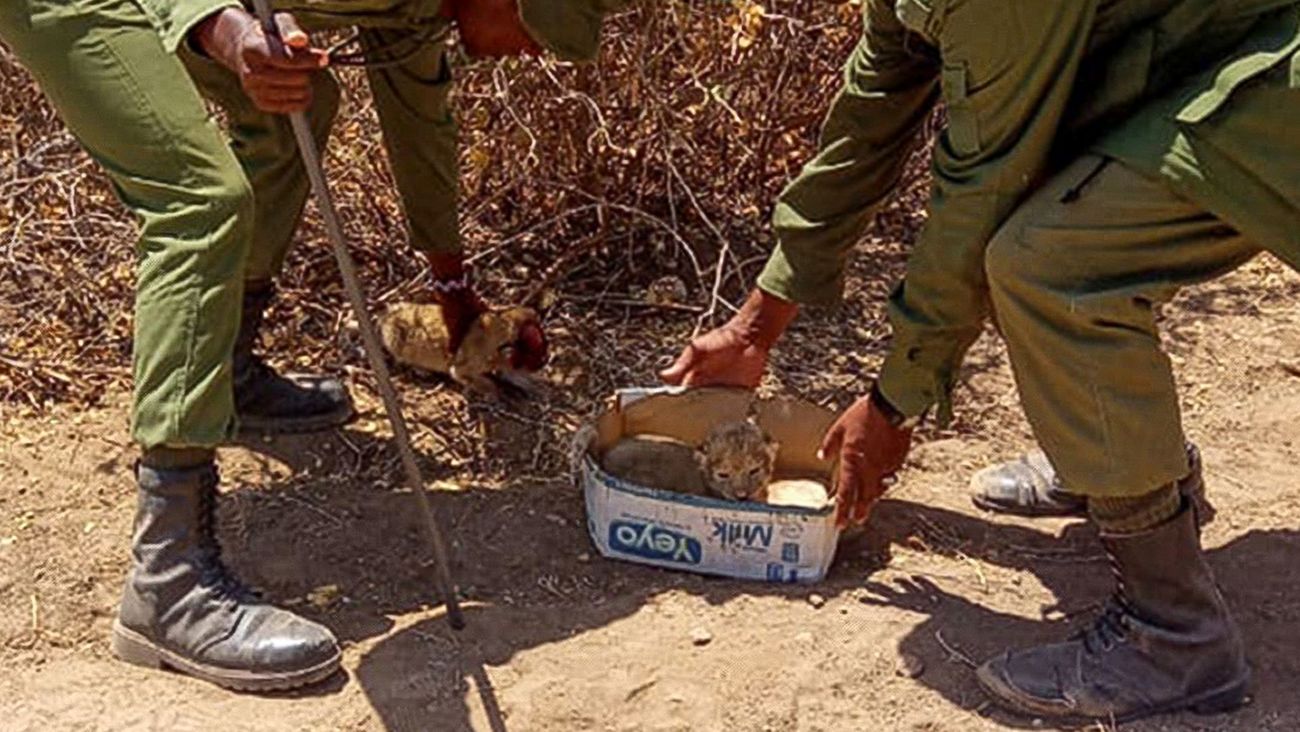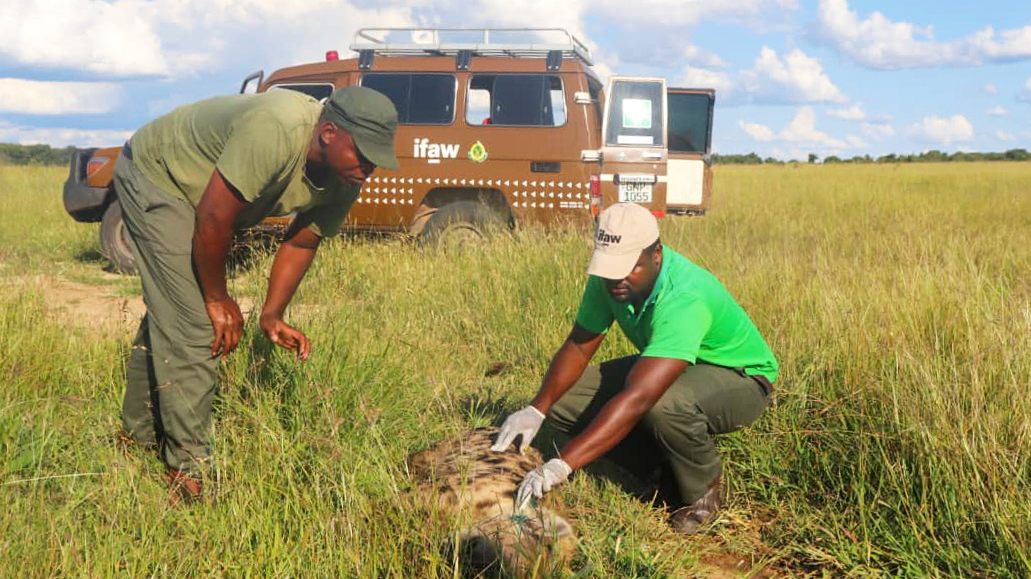What is the goal of wildlife conservation?
What is the goal of wildlife conservation?
Climate change, habitat destruction, and human-wildlife conflict are all putting stress on our ecosystems and pushing more and more animals toward extinction. That’s why we need wildlife conservation efforts to protect our planet and safeguard biodiversity.
In this blog, we take a closer look at what wildlife conservation is, its goals, and why it is so important.

Defining wildlife conservation
First, let’s briefly cover what we mean by the term ‘wildlife conservation’.
Wildlife conservation is a combination of actions aimed at protecting endangered and threatened animal species, preserving their natural habitats, and promoting sustainable practices. It involves a range of strategies, from habitat restoration to policy advocacy, all geared towards maintaining biodiversity and making ecosystems resilient in the face of threats like climate change.
At its core, wildlife conservation seeks to protect the diversity of life on Earth, known as biodiversity. This involves recognizing the value of every species, regardless of its size or utility to humans. By safeguarding biodiversity, we ensure the survival of ecosystems, their important functions, and their ability to adapt to environmental changes.
Why is wildlife conservation important?
Now we have an understanding of what wildlife conservation is, let’s look at why it’s important for the continued survival and flourishing of our planet.
Stable ecosystems
Ecosystems are intricate networks where each species plays a specific role. The loss of even a single species can have cascading effects, disrupting food chains, altering nutrient cycles, and destabilizing entire ecosystems. By conserving wildlife, we uphold the integrity of these ecosystems, promoting resilience and biodiversity.
Benefits to the climate
In addition to benefiting individual ecosystems, wildlife conservation supports the functioning of the planet as a whole and can even mitigate the effects of climate change. This is because animals, though often overlooked, are a crucial aspect of climate resilience.
Thriving ecosystems provide natural functions that benefit the planet—clean air, clean water, fertile soil, shade, and carbon sequestration, to name a few. As CO2 accumulates in the atmosphere and contributes to the greenhouse effect, our planet warms and the climate shifts. But plants, through photosynthesis, absorb carbon from the air—they need it to survive. They replace it with oxygen, the air we (and all animals) need to breathe. Protecting forests is thus a crucial part of slowing the impact of climate change, as forests sequester about one quarter of all human carbon emissions every year.
A key part of protecting forests is supporting the wild animals that inhabit them. Elephants and other animals are known as ecosystem engineers because of how they support the land around them and the other animals that live alongside them. One example of how elephants support forests is the trampling of plants to thin out the tree canopy—this may sound counterintuitive, but it provides more space for young plants to grow. Their feces also support the soil and spread seeds, thanks to their herbivorous diet.
Another example of wildlife conservation supporting the climate is the protection of whales. Not only do each of these giant marine mammals sequester about 33 tonnes of carbon in their large bodies, but they also feed phytoplankton—the tiny marine algae that produce more than half of the world’s oxygen—through their poop.
Benefits to people
Although the economic benefits of wildlife conservation might not be the first thing that comes to mind, it is still an important aspect to consider. Beyond their intrinsic value, wildlife and their habitats provide tangible economic benefits. Healthy ecosystems support essential functions such as pollination, water purification, and carbon sequestration, upon which human societies rely.
Additionally, wildlife-based tourism generates significant revenue, contributing to local economies and livelihoods. Conservation efforts not only protect wildlife but also sustain these economic benefits for future generations.
A moral and ethical imperative
We hold a moral responsibility to protect and preserve the diversity of all life on Earth. Each species has its own right to exist, independent of its utility to humans. Upholding principles of compassion and respect, wildlife conservation honors the inherent value of all living beings, reflecting our interconnectedness with the natural world.

What is the goal of wildlife conservation?
We know what wildlife conservation is and we have explored some of the reasons why it is so important but what exactly is the goal of wildlife conservation? Well, there is not just one goal but many. Wildlife conservation encompasses both short-term interventions and long-term sustainability.
Let’s take a look at some of the key outcomes that wildlife conservation aims to achieve.
Mitigating climate change
Climate change is no longer a ‘what-if’ scenario. It’s real, it’s present, and it’s getting worse. Although we know beyond a doubt that climate change is caused by human activity, one aspect that is often overlooked is the role that the natural world plays in mitigating the effects of climate change.
Our oceans, forests, and marshlands act as carbon sinks that sequester vast amounts of carbon dioxide from the atmosphere, with many animals also playing this same role. Additionally, many animals act as ecosystem engineers, altering the environment around them through their natural behaviours and allowing ecosystems to flourish.
Conservation initiatives that protect wild animals and the environment allow them to continue performing these crucial roles and help to blunt the effects of human-driven climate change.
Preserving biodiversity
At the heart of wildlife conservation lies the preservation of endangered species facing threats such as habitat destruction, poaching, and climate change. Without intervention, we risk losing the abundant biodiversity found all over our planet.
As with climate change, declines in biodiversity result in ecosystems becoming unbalanced, leading to adverse effects for both the animals and humans living in these areas. Without sufficient biodiversity, life becomes unsustainable.

Ensure sustainable use of natural resources
Humans rely on the natural world for almost all of our resources in some way or another. Whether it be land to live on, food to eat, or materials to use, some level of harvesting of natural resources is required.
However, when this use of natural resources is taken too far, we put animals—and by extension, ourselves—at risk. Overfishing, trophy hunting, poaching, and factory farming all exploit the natural resources our planet provides to an unsustainable level.
Wildlife conservation aims to promote the sustainable use of natural resources so that both humans and animals can continue to live in harmony with one another and the natural world. Conservation efforts also can help these natural resources be used and distributed more fairly and equitably, so local communities can reap the benefits.
Educate communities about the importance of wildlife
Although the importance of our wildlife may seem obvious to some, this is not always the case. Community engagement and education initiatives are critical aspects of wildlife conservation, as they teach people about the crucial roles that wildlife plays in the natural world and how the flourishing of our wildlife directly impacts the flourishing of our communities.
Allow communities and wildlife to coexist peacefully
Human-wildlife conflict is a pressing conservation issue. When humans and animals live in close proximity with one another, conflicts are sure to occur. Whether that is predators hunting livestock, elephants trampling and eating crops, or direct confrontations with animals, human-wildlife conflict puts all parties at risk.
Finding sustainable ways for humans and animals to live alongside one another is key to protecting everyone and ensuring that we can coexist peacefully with the wildlife we share our homes with.
Our work
IFAW has been striving to protect our wildlife since we were founded back in 1969. Take a look at two of our current top priorities: our campaign to save the critically endangered North Atlantic right whale and our Room to Roam initiative, which aims to provide space and safety for elephants in Africa.

Protecting elephants in Africa
Room to Roam is IFAW’s vision for conservation in East and southern Africa. Based on more than 20 years of science, Room to Roam offers an innovative approach to African conservation that includes humans as part of the solution. At its crux is habitat connectivity, which provides a foundation for biodiversity, resilience to climate change, and a future where animals and people can coexist and thrive.
More than 330,000 African savannah elephants in East and southern Africa inhabit increasingly fragmented landscapes, often outside of formally protected areas. Such restricted ranges make these animals and others vulnerable to drought, poaching, and conflict with humans. IFAW is working to ensure the persistence of viable, stable elephant populations in these areas. The pillars of our initiative are building climate resilience, using scientific research to inform conservation, embracing community involvement, and rescue to release.
Ultimately, Room to Roam aims to secure and connect 10 critical landscapes, each home to at least 10,000 elephants
Saving North Atlantic right whales
As we have already discussed, the oceans play a number of roles in keeping our planet in balance, from sequestering carbon to providing food and income for coastal communities.
Whales are a huge part of allowing the ocean as a whole to function as it should. They play a role as ecosystem engineers, keeping the food chain in balance through their feeding habits and distributing resources across the ocean.
However, our whales are increasingly at risk from entanglement, vessel strikes, and increased ocean noise. One species facing extinction today is the North Atlantic right whale.
North Atlantic right whales often get accidentally tangled in fishing nets and other gear, leading to injury and death. Through the use of drones to help track whales and sedatives that slow them down, IFAW has been helping to disentangle whales caught in fishing gear. Our innovative solution is safer and more efficient for both the whales and the rescuers and has the potential to help over 70 whales each year off the coasts of the US alone. We also promote the use of whale-safe fishing gear in areas that are particularly dangerous for right whales.
Another threat to North Atlantic right whales is vessel strikes—when large ships collide with marine species, often whales. This can lead to severe injury and death of the animals, as well as putting the sailors at risk. IFAW’s Whale Alert app provides mariners with data on the location and movements of right whales to avoid such accidents.
Additionally, the increased noise caused by the ships makes it difficult for whales to communicate, disrupting mating, hunting, and the natural movement patterns of the animals.
Our Blue Speeds initiative aims to reduce the speed at which ships move through the ocean, simultaneously reducing the chances of vessel strikes and lowering the noise in the oceans. By reducing ship speeds by just 10%, we can reduce underwater radiated noise by 40%, the risk of vessel strikes by 50%, and greenhouse gas emissions by 13%.
Learn more about our other projects or how you can get involved.
Related content
every problem has a solution, every solution needs support.
The problems we face are urgent, complicated, and resistant to change. Real solutions demand creativity, hard work, and involvement from people like you.